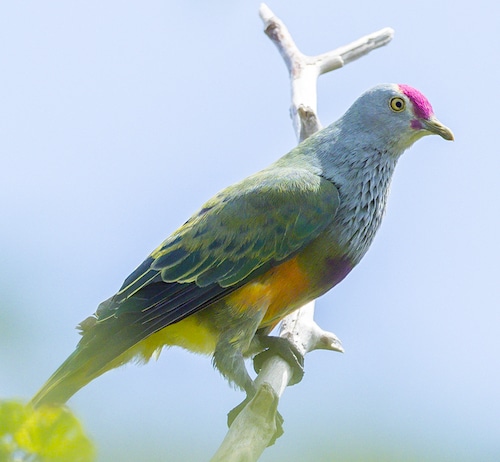Commonwealth of the Northern Mariana Islands

Birding the Northern Marianas
The Marianas is a chain of volcanic islands. [Politically Guam the largest and most southerly is a US territory – See Guam]. The rest of the chain running north (14 islands in all) is a US Commonwealth with it’s own immigration and customs but using US currency, military, post office etc. Of the northern islands three are large enough to have towns and villages and two others have tiny populations (less than ten). The flora is tropical jungle. Year round temperatures are daytime highs of 88°F and overnight lows of 75°F. Rainfall is usually moderate but the islands are subject to tropical storms.
The islands of Saipan and Tinian were turned over to sugar production during Japanese colonial times (1899-1944) and most of the lowlands were converted to intensive agriculture. During the Second World War the islands were razed during the American invasion of June 1944 – extensive use was made of fire to clear possible cover used by the Japanese occupying forces. After the war aerial re-seeding was undertaken, but with non-native trees! That any birds survived at all is a tribute to their adaptability.
The brown tree snake, probably introduced via furniture imports from Indonesia, which has devastated native birds on Guam has been reported on Saipan but eradication efforts are under way and numbers, if any, are still small. Non-native bird species are doing some crowding out of the pretty little fantail [Rufous Fantail rhipidura rufifrons] on the island of Rota.
The islands these days are a major tourist destination for Japan and hotels and other tourist attractions abound. The ecology of Guam and Saipan have suffered accordingly. Two small islets attached to Saipan are noted for birds; the appropriately named Bird Island and Forbidden Island (so named because it was, for a long period, part of a CIA training area). The Island of Farallon de Mendinilla just north of Saipan is also noted for it’s bird population but is not a good place to watch them because it is presently a US Naval bombing range.
-
Number of bird species: 104
Number of endemics: 1
Rota White-eye Zosterops rotensis
-
iGoTerra Checklist
iGoTerra ChecklistFatbirder Associate iGoTerra offers the most comprehensive and up to date birds lists on the web
-
Birds of Eastern Polynesia: A Biogeographic Atlas
by Jean-Claude Thibault & Alice Cibois | Lynx Edicions | 2017 | Hardback | 438 pages, 200 colour photos and illustrations, 70 b/w illustrations, 142 colour distribution maps | ISBN: 9788416728053 Buy this book from NHBS.com
-
2012 [03 March] - Gail Mackiernan - Western Pacific Cruise (New Zealand to Japan)
ReportMariana Fruit Dove Another brilliant dove. Fairly common, although not that easy to see. In all we saw about eight birds and heard others on Saipan – best views were along the Laderan Tangke Nature Trail… -
2023 [04 April] - Doug Whitman
PDF ReportRare birds, coral reefs, ancient ruins, and boats: independent birding in Micronesia
-
Mariana Swiftlet Aerodramus bartschi
InformationThe Mariana swiftlet is endemic to the Northern Mariana Islands of Guam, Rota, Aguiguan, Tinian, and Saipan, but are currently found only on Guam, Aguiguan, and Saipan

